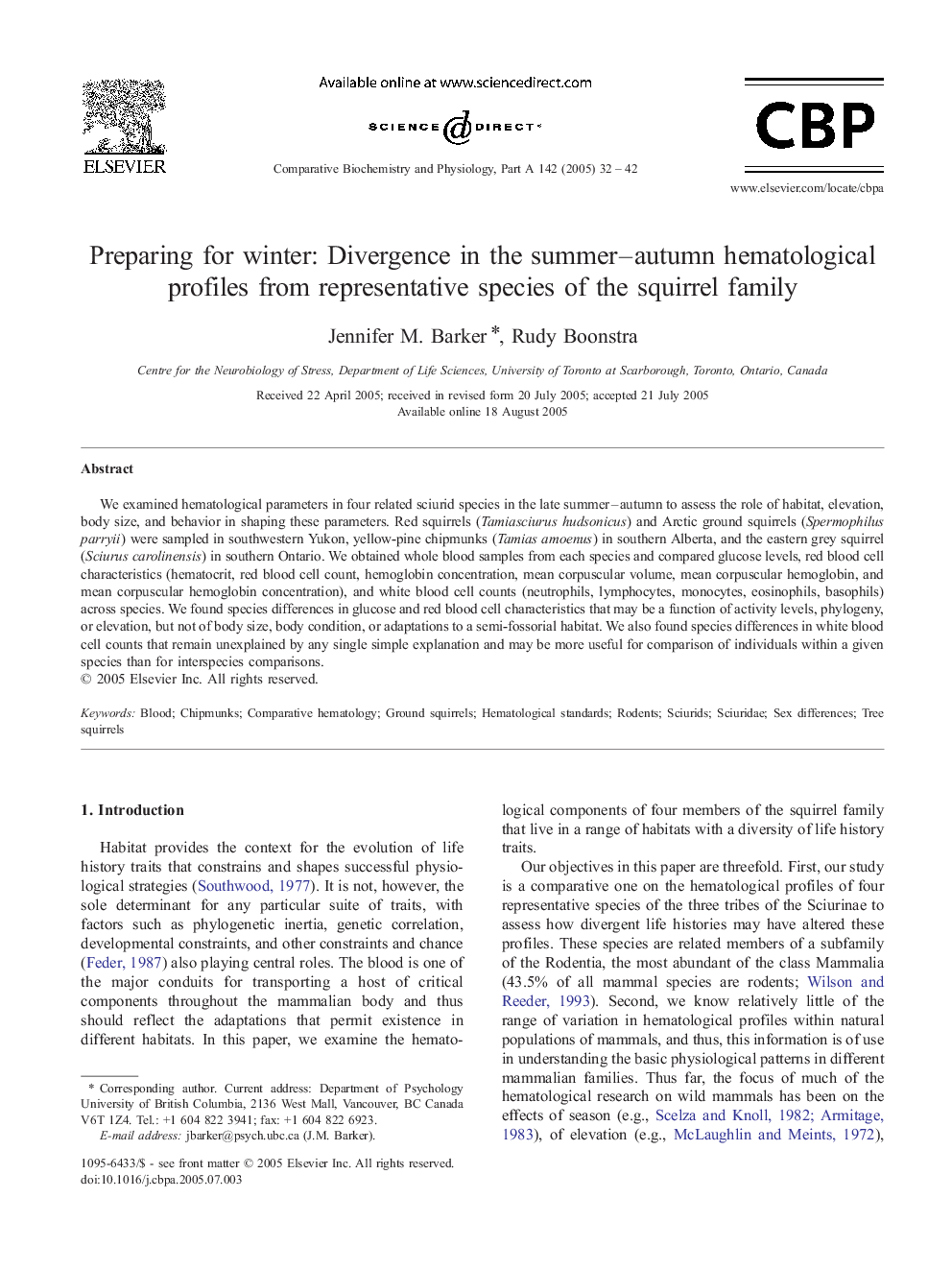| Article ID | Journal | Published Year | Pages | File Type |
|---|---|---|---|---|
| 10819063 | Comparative Biochemistry and Physiology Part A: Molecular & Integrative Physiology | 2005 | 11 Pages |
Abstract
We examined hematological parameters in four related sciurid species in the late summer-autumn to assess the role of habitat, elevation, body size, and behavior in shaping these parameters. Red squirrels (Tamiasciurus hudsonicus) and Arctic ground squirrels (Spermophilus parryii) were sampled in southwestern Yukon, yellow-pine chipmunks (Tamias amoenus) in southern Alberta, and the eastern grey squirrel (Sciurus carolinensis) in southern Ontario. We obtained whole blood samples from each species and compared glucose levels, red blood cell characteristics (hematocrit, red blood cell count, hemoglobin concentration, mean corpuscular volume, mean corpuscular hemoglobin, and mean corpuscular hemoglobin concentration), and white blood cell counts (neutrophils, lymphocytes, monocytes, eosinophils, basophils) across species. We found species differences in glucose and red blood cell characteristics that may be a function of activity levels, phylogeny, or elevation, but not of body size, body condition, or adaptations to a semi-fossorial habitat. We also found species differences in white blood cell counts that remain unexplained by any single simple explanation and may be more useful for comparison of individuals within a given species than for interspecies comparisons.
Related Topics
Life Sciences
Biochemistry, Genetics and Molecular Biology
Biochemistry
Authors
Jennifer M. Barker, Rudy Boonstra,
